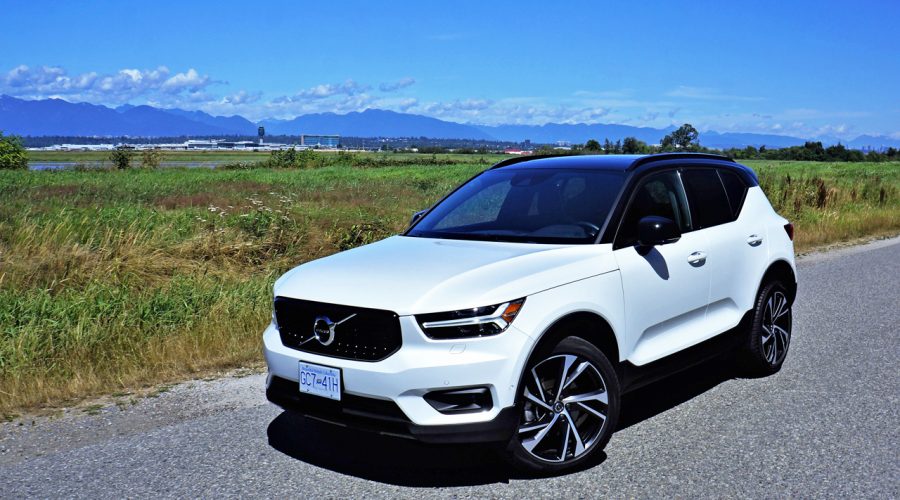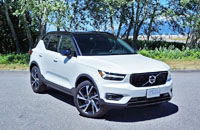
I must admit… I really like Volvo. Particularly new, reinvented Volvo, since the Swedish luxury brand completely reimagined its place within the luxury sector in 2015 with the launch of the 2016 XC90, from its styling, interior design and quality, to its electronics, advanced drivetrains, performance, and of course safety. Volvo is leading its more commercially relevant competitors in almost every respect, and it’s seeing success because of it.
I’m not going to pretend that all of its new models are enjoying the fruits of its labours in abundance, mind you, but lacklustre market response to its 90-series cars is hardly an isolated phenomenon within the ebbing sedan and wagon market. After all, where the S90, V90 and V90 Cross Country only managed a collective 835 sales in Canada last year, they beat Genesis (Hyundai’s new luxury brand), Maserati, Jaguar, Acura and Infiniti in the mid-size luxury E-segment, and repeated the feat over the first three months of 2019 too.
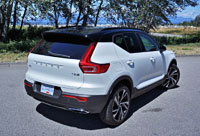
Volvo is stronger when it comes to sales numbers in crossover SUV territory, but its XC60 only trounced Lincoln, Alfa Romeo, Jaguar and Cadillac last year, while getting extremely close to one-upping Infiniti, a performance it couldn’t quite repeat over Q1 of 2019 due to losing ground against Cadillac, Infiniti and Lincoln, while gaining market share on Porsche. The XC90 is stronger in the mid-size luxury SUV class, having overpowered Jaguar, Porsche, Tesla, Range Rover, Land Rover, and Maserati throughout 2018, although it only outsold Range Rover, Tesla, Land Rover, and Maserati as of March 31, 2019. This said the XC90 is doing pretty well for a vehicle that’s four years into its lifecycle.
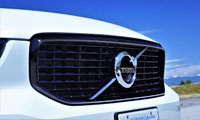
And how about the new XC40? This subcompact luxury SUV, winner of the 2018 European Car of the Year, opens up totally new opportunities for Volvo, and does so in a market segment that’s hardly filled out with competitors. Despite arriving just partway through the year, the XC40 outpaced Jaguar’s E-Pace and Infiniti’s QX30 (the latter discontinued for 2019), and did so by a very wide margin, more than doubling deliveries of the former and tripling the latter. It was actually nudging up against Range Rover’s Evoque as well, but stayed far from contention when compared to Audi’s Q3, Mercedes’ GLA, and BMW’s class-leading X1/X2 combination. Still, it was a worthy effort from a new entry that was only on the market for the latter half of the year.
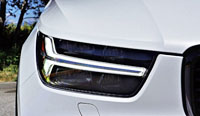
How about 2019? Over the first three months of this year the XC40 has found five and a half times more buyers than the Infiniti QX30 (again, a model being phased out), almost five times as many as the Jaguar E-Pace, hundreds more than the Range Rover Evoque, has surpassed BMW’s X2 sales, and is within shooting range of Mercedes’ GLA. We’ll have to watch and see if Volvo’s upward trajectory in this class continues, but I believe if more people learn about this impressive little SUV, the more chance it has of succeeding.
So let’s run down the list of attributes I mentioned at the beginning of this review, starting with styling. Other than looking a bit too much like Jeep’s arguably handsome new Compass, the XC40 offers up a standout design, especially in its two-tone colour combinations. I tested a base Momentum model that I’ll cover in a future review, dipped in a lovely light pastel Amazon Blue paint with a white roof, and it caused more rubbernecking than anything else I’ve driven in this class. My Crystal White Pearl Metallic painted R-Design, showing off a standard black roof like all R-Design models, drew nearly as much attention, and would be my choice due to its slightly more masculine, sportier look.
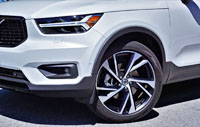
Inside, the XC40 provides all of the upscale luxury expected in a premium-labeled entry SUV, no matter the trim. The front roof pillars are fabric-wrapped, the dash-top and top halves of the door skins are finished in soft-touch composite, the armrests are padded with stitched leatherette, while the insides of the door pockets are actually carpeted, plus they’re large enough to accept a 15-inch laptop and a drink bottle. Back to the soft pliable surfacing, there’s none below the waistline, including the centre console that gets some soft paint for consolation, this above carpeting that wraps around the lower portion, while overhead there’s a high-quality woven roofliner framing a massive panoramic glass sunroof with a powered translucent sunshade.
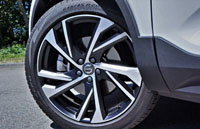
The dash design is typical modern Volvo, which means tasteful with minimal clutter, although it’s been given a funky twist including cool retro-like vertical satin silver metal vents next to the centre stack and each corner, adorned by attractive textured aluminum inlays across the instrument panel and doors. All of the satin silver trim is exquisitely crafted, particularly the knurled metal grips on the rotating vent actuators, and the similar treatment given to the audio system’s main volume control knob, while all of the switchgear is easily up to others in this class and surpasses some.
Likewise, the R-Design’s exclusive contrast stitched perforated leather-wrapped and metal adorned sport steering wheel is beautifully finished, while a similar treatment is given to the electronic shift lever, not to mention the stunning leather and suede-like Nubuck upholstered seats, which are joined by sporty metal foot pedals to make this the obvious choice for those who want to flex a little muscle while running their urban errands.
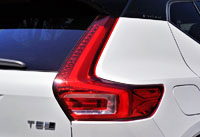
Those seats are extremely comfortable and feature good side bolstering as well as extendable lower cushions that cup nicely under the knees, plus the rear seating area is ultra-generous, even fitting in large six-foot-plus passengers with room to spare. Volvo provides rear occupants with a flip-down armrest in the middle, which doubles as a centre pass-through when the otherwise 60/40-split rear seatbacks are folded flat to accommodate longer cargo in the equally sizeable and wonderfully flexible cargo area, which incidentally measures 586 litres (20.7 cubic feet) when the rear seats are in use, and 917 litres (32.4 cubic feet) when lowered.
Making matters easier, they lower via a control panel of powered release switches on the passenger’s side cargo wall, while adding yet more utility is a cargo floor that folds in half and sits vertically with three handy grocery bag hooks on top, or alternatively can be swiveled into a small parcel shelf. I tested the former out on the way home from shopping and they worked fabulously.
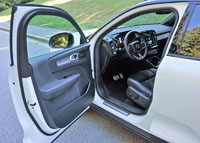
Speaking of handy, the XC40 also includes a foldout hook from the glove box, a removable waste bin within the centre console, an available storage box under the driver’s seat cushion, a parking pass holder on the left side of the inner windshield, plus gas card slots to the left of the driver’s knee. Additionally, ahead of the centre console is a large compartment for stowing a big smartphone with sunglasses or what-have-you to each side, the base of which optionally doubles as an inductive device charger, plus sidled up beside a 12-volt charger there are two USB ports within the compartment as well, one solely for charging and the other for connecting to the Apple CarPlay- and Android Auto-infused infotainment system just above (there are three USB ports altogether). Yes, this little SUV is as convenient as they come, and really should win an award for thoughtfulness.
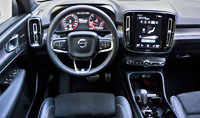
Such hidden standard items might go unnoticed unless your Volvo sales or service rep points them out, but it’ll be difficult to miss the configurable colour TFT digital gauge cluster staring you in the face upon climbing inside. It’s large and bright at 12.3-inches in diameter, high in definition, and filled with features including an available navigation map that expands to fill most of the multi-information display portion in the middle. No direct competitor delivers anything anywhere near as good in standard trim, with most not even offering the a digital gauge option at all, giving Volvo the lead in electronic interfaces.
This said, I haven’t even mentioned the brand’s award-winning nine-inch vertical centre touchscreen, which comes closer to resembling an iPad- or Samsung-style tablet than anything else in the category. No matter whether you’re purchasing this entry-level SUV or the full-tilt XC90, Volvo doesn’t differentiate between its Sensus systems, meaning you get the best they have to offer, and it’s truly superb. Like a tablet it ideally responds to touch gestures such as tap, swipe and pinch, and does so for many more functions than the usual navigation map. In fact, adjusting the temperature settings for the as-tested upgraded dual-zone automatic climate control system results in tall readouts popping onto either side of the display, letting you slide your finger up and down to choose your individual comfort zone.
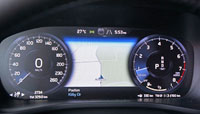
The Sensus touchscreen also allows control of all audio functions including streaming Bluetooth, satellite radio, 4G LTE Wi-Fi, and more, while it’s easy to connect your phone, whether doing so by Bluetooth or plugging it in for the aforementioned Apple and Android apps. It’s an elegantly designed interface that’s easily one of the best in its class, and should be easy to operate for anyone used to a modern-day smartphone.
Also on the centre stack, a narrow row of high-quality switchgear can be found just below the main touchscreen for quick access to key HVAC controls, a couple of audio controls including the aforementioned metal-edged volume knob, plus the hazard lights, and to the very right a drive mode selector with Eco, Comfort, Dynamic, Off-road and Individual settings, the Off-road setting incidentally not available with base Momentum trim.
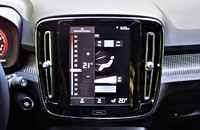
As noted just before, navigation isn’t standard, but rather a standalone $1,000 add-on, yet the standard list is nevertheless long and includes most everything already mentioned plus LED headlamps, roof rails, remote engine start, pushbutton ignition, a leather-wrapped multi-function steering wheel, an electromechanical parking brake, rain-sensing wipers, an auto-dimming rearview mirror, automatic climate control, voice activation, heated front seats, a powered driver’s seat with four-way lumbar support and memory, genuine aluminum inlays, plus a host of active safety gear like forward collision warning with automatic emergency braking, lane departure warning and mitigation, etcetera, enough to earn it a best-possible Top Safety Pick + rating from the IIHS (the only SUV in its subcompact segment to do so), all for just $39,500 plus freight and fees, which makes it one of the most affordable vehicles in its luxury class with standard all-wheel drive.
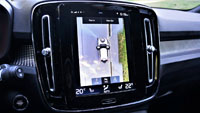
The as-tested R-Design, which starts at $44,100, includes all items noted previously as well as a one-inch larger set of 19-inch alloy wheels (although my tester wore optional 20s) attached to a sport suspension, plus a unique grille treatment, black skid plates, black mirror caps, gloss-black exterior trim, and the aforementioned black roof top, as well as active bending headlights, fog lamps, a rectangular set of exposed dual tailpipes (the base model’s are hidden), special aluminum front treadplates, upgraded carpets, better interior illumination, dual-zone auto climate control, a powered front passenger’s seat, cushion extensions for both front seats, a panoramic glass sunroof, black fabric pillars and roofliner (instead of light beige), an aluminum cargo sill protector, etcetera.
My tester also had a $1,750 Premium Package featuring the inductive phone charger, the underseat storage box and grocery bag holders mentioned earlier, plus headlight washers, auto-dimming power-retractable side mirrors, heated wiper blades, a heatable steering wheel, heated rear outboard seats, a powered tailgate, and Blind Spot Information System with Cross Traffic Alert.
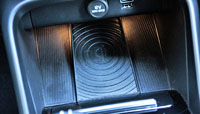
On top of this was a $2,000 Premium Plus Package including a 360-degree overhead Surround View parking camera, a HomeLink universal garage door opener, adaptive cruise control, Volvo’s Pilot Assist semi-autonomous Driver Assistance System, semi-autonomous Park Assist Pilot with Park Assist Front and Rear (a hands-on self-driving system that helps to ease highway driving quite well), and a 12-volt power outlet in the cargo area; plus Volvo added the previously noted $1,000 navigation system, as well as $950 worth of great sounding 600-watt, 14-speaker Harmon-Kardon audio.
Prior to its brand-wide revamp initiated in 2015, Volvo started to upgrade past models with a new lineup of innovative powertrains. Unlike any other luxury brand, or any other major automaker for that matter, the Chinese-owned Swedish company chose to base its entire model line on one 2.0-litre four-cylinder engine using turbocharging in base form, both turbocharging and supercharging in mid-range trims, and, debuting with the XC90 for 2016, a turbocharged, supercharged and plug-in electric version boasting 400 horsepower and 400 lb-ft of torque.
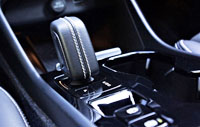
While a 400-horsepower XC40 sounds like a barrel of fun, a February 2019 announcement stated the plug-in variant slated for Volvo’s smallest SUV would in fact be the completely new 184-net-kW (247-net-hp) T5 Twin Engine with 328 net-lb-ft of torque thanks to an electric motor and a 1.5-litre three-cylinder gasoline-powered engine driving the front wheels. This should be followed closely by a version of the XC40 incorporating an even thriftier T4 Twin Engine, although we’ll likely only receive the more potent PHEV in North America. Additionally, Volvo announced in March that it will reveal a full-electric version of the XC40 before the end of 2019, as part of a push toward having half of its global sales made up of full-electric vehicles by 2025.
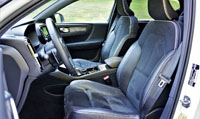
For the time being, Volvo’s second-most popular model worldwide (behind the XC60) receives a standard 2.0-litre turbocharged engine making 248 horsepower and 258 lb-ft of torque, which drives all wheels via an eight-speed automatic transmission. This said a new 2.0-litre turbo-four designated T4, capable of 187 horsepower and 221 lb-ft of torque and coming standard with the same eight-speed auto and AWD, will be the base powerplant in Momentum trim for 2020, with R-Design and Inscription trims including the T5 engine, featuring 248 horsepower and 258 lb-ft of torque, as standard kit.
I can’t speak for the upcoming T4, but my tester’s T5 powertrain is an ideal match for the lightweight XC40, resulting in a fast-paced, fun-to-drive subcompact crossover SUV. Of course, it’s hardly the most formidable in its class, Jaguar’s E-Pace and Range Rover’s Evoque R-Dynamic models bringing 296 horsepower apiece to the segment, BMW’s X2 M35i stepping up with 302 horsepower, and Mercedes’ blisteringly quick AMG GLA 45 holding the category title with 375 horsepower.
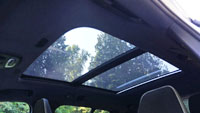
Still, the XC40 immediately jumps off the line, its eight-speed autobox a bit annoying when moving into Drive or Reverse as it needs two taps to do so, but once underway it shifts with nice, snappy increments, especially when its sportiest “Dynamic” drive mode is selected and my R-Design model’s paddle shifters are engaged, and it feels nice and planted while doing so.
No doubt my tester’s lower profile 20-inch tires played a role where rubber meets the road, not to mention its sport-tuned suspension setup, which otherwise is fully independent with aluminium double wishbones up front and a unique integral-link design that includes a lightweight composite transverse leaf spring at the rear. Hence it hooked up well enough through the corners, something I enjoyed when making up for lost time around town, as well as during a couple of fully engaged test sessions in the countryside.
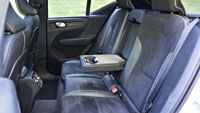
You sit up nice and high, which is ideal for visibility, and while this should negate at-the-limit handling it’s not destabilizing at all, but rather my XC40 R-Design felt confidence-inspiring when pushed hard, only leaning slightly when asking more from it than most owners ever would. Fortunately braking is quite good, whether feathering the front discs to set up a corner or jamming down hard on all four during a panic situation, it responded with poise.
Its ride quality is very good for such a small SUV, the XC40 feeling more substantive overall than its size should allow, and I don’t believe there’s much if any difference in suspension comfort from models with 18-inch wheels and a regular “Dynamic” suspension than the sport setup wearing 20s. Volvo offers an adaptive Four-C Chassis for $1,000, but honestly I don’t think it’s needed.
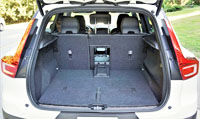
All in all the XC40 feels like a bigger and more substantive SUV than it really is, its doors and hatch closing with impressive solidity, plus it’s quiet and feels well-built when encountering road imperfections such as broken pavement, potholes, bumps, etcetera.
Fuel economy, rated at 10.3 L/100km in the city, 7.5 on the highway and 9.0 combined, only looks poor if putting it up against something much less powerful and front-wheel drive like Lexus’ new UX (only 169 horsepower and 151 lb-ft of torque) that gets 7.2 combined in non-hybrid form. In fact, the XC40’s combined city/highway rating is identical to the Mercedes GLA 250 4Matic, better than the BMW X1 that can only manage 9.3 combined, noticeably ahead of the base Jaguar E-Pace P250’s rating of 9.8 combined, and a big improvement over Audi’s new Q3 that’s rated at just 10.6 combined. If anyone cares, the XC40 is even thriftier than the comparatively anemic yet still most capable (153-hp) full-load Buick Encore AWD that can only manage 9.1 L/100km combined. Of note, most of those above, including the XC40, benefit from auto start/stop technology that shuts the engine off when it would otherwise be idling, especially helpful in improving air quality.
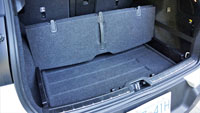
I don’t think Volvo will mind if I end this review on such a positive note. The fact is, after a weeklong test I haven’t found much to fault the new XC40 on, but rather I feel it’s one of the better compact luxury SUVs now available. You may have heard me say this before about something different, but keep in mind that most new models improve with each new generation, and in the case of the XC40, which allowed Volvo a completely clean slate to build upon, it’s been extremely well executed.
Thanks to a quiet, comfortable ride with better than average handling, strong straight-line performance mixed with impressive efficiency, a comfortable, accommodating, and superbly crafted cabin filled with thoughtful touches that make life more convenient, plus value that’s hard to argue against, the XC40 is a clear winner that should attract plenty of new customers into the Swedish brand’s fold, and that bodes well for Volvo’s long-term future.

